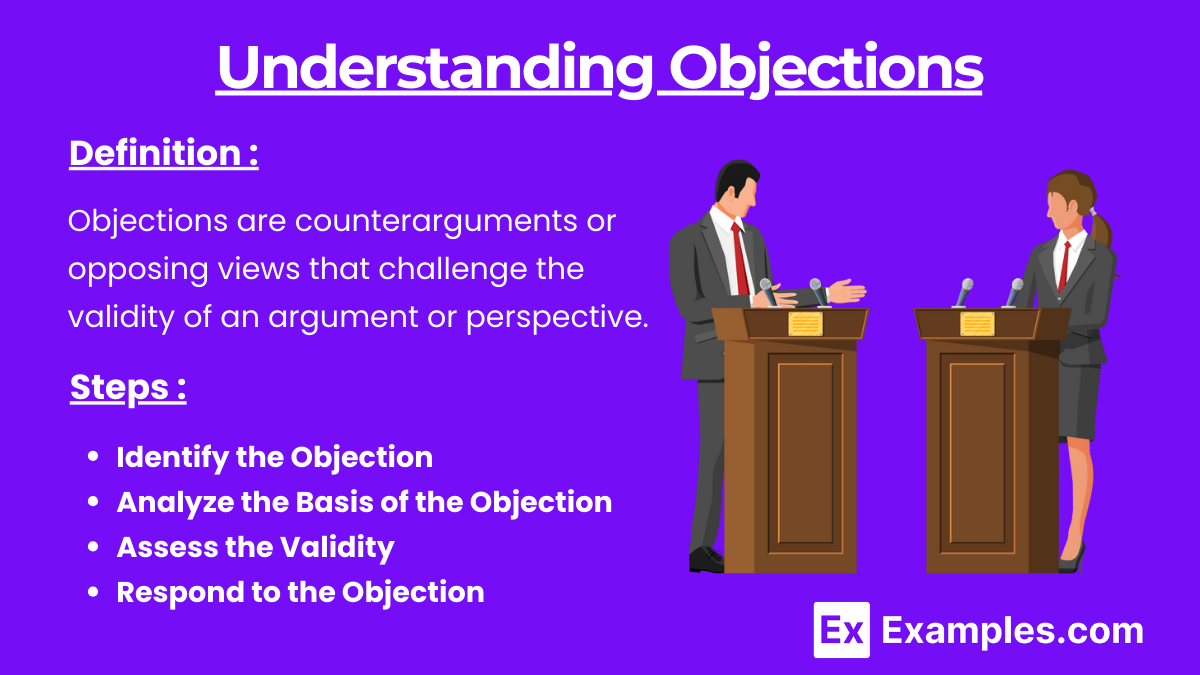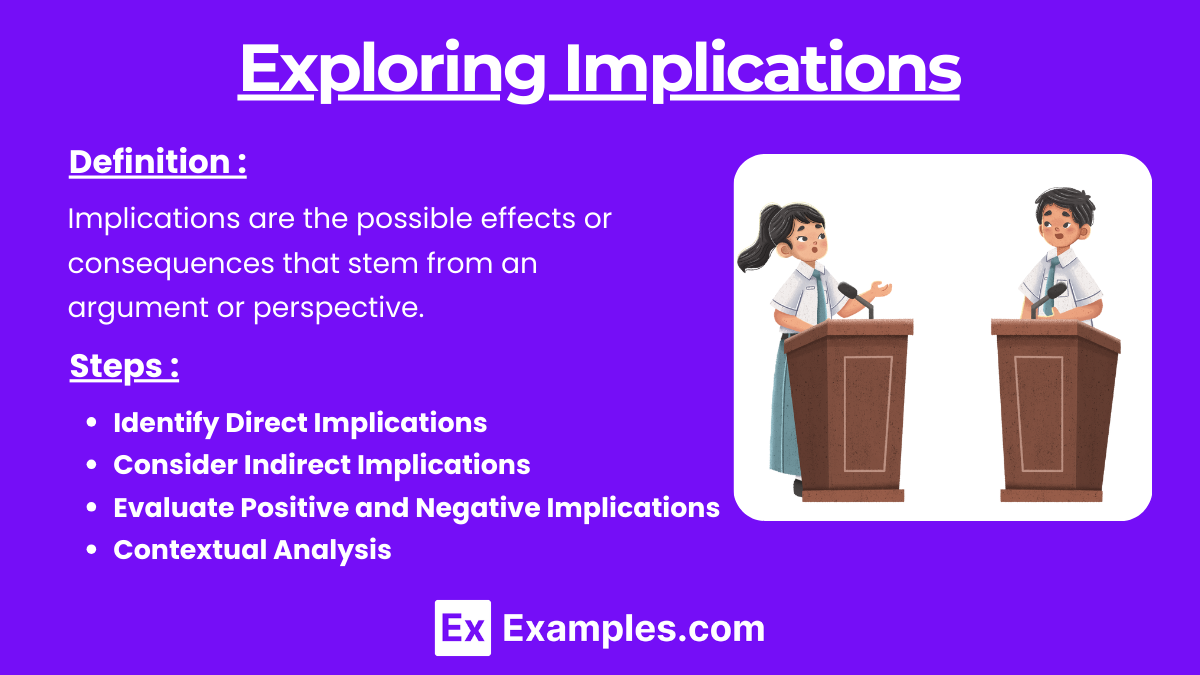Evaluating objections, implications, and limitations is essential for a comprehensive analysis of different perspectives or arguments. This process involves identifying and responding to counterarguments, understanding the broader effects of an argument, and recognizing its constraints. By systematically addressing these aspects, students can develop a balanced and well-supported evaluation, enhancing their critical thinking skills. In the AP Seminar exam, mastering this approach enables a deeper understanding of complex issues and contributes to achieving higher scores through thorough and nuanced analysis.
Learning Objectives
By studying the evaluation of objections, implications, and limitations of different perspectives or arguments for the AP Seminar exam, students will learn to identify and analyze counterarguments, assess the broader consequences of arguments, and recognize their inherent constraints. This will enhance their ability to construct balanced and persuasive analyses, improve critical thinking and reasoning skills, and develop a nuanced understanding of complex issues, ultimately contributing to higher exam scores and a more comprehensive grasp of academic discourse.
Understanding Objections

Objections are counterarguments or opposing views that challenge the validity of an argument or perspective. They play a critical role in critical thinking and analysis.
Steps to Evaluate Objections:
- Identify the Objection:
- Determine the counterargument presented against the main argument.
- Example: If the main argument is that “social media positively impacts communication,” an objection might be “social media leads to superficial interactions.”
- Analyze the Basis of the Objection:
- Assess the evidence and reasoning behind the objection.
- Example: Studies showing increased feelings of loneliness among social media users can support the objection.
- Assess the Validity:
- Consider the credibility of sources and the strength of evidence.
- Example: Peer-reviewed studies versus anecdotal evidence.
- Respond to the Objection:
- Provide a rebuttal or acknowledge the validity of the objection while presenting a balanced view.
- Example: Acknowledge that while some studies show negative impacts, others highlight the benefits of social media in maintaining long-distance relationships.
Exploring Implications

Implications are the possible effects or consequences that stem from an argument or perspective. They help in understanding the broader impact of adopting a particular view.
Steps to Evaluate Implications:
- Identify Direct Implications:
- Determine the immediate effects of accepting the argument.
- Example: Accepting that “renewable energy is crucial for sustainable development” implies increased investment in renewable technologies.
- Consider Indirect Implications:
- Analyze secondary or long-term effects.
- Example: Long-term economic shifts towards green jobs and industries.
- Evaluate Positive and Negative Implications:
- Weigh the benefits and potential drawbacks.
- Example: While renewable energy reduces carbon footprint, initial costs and technological limitations can be significant challenges.
- Contextual Analysis:
- Understand the implications within different contexts (social, economic, environmental).
- Example: In developing countries, the transition to renewable energy might be slower due to economic constraints.
Assessing Limitations
Limitations refer to the constraints or weaknesses in an argument or perspective. Recognizing limitations is essential for a balanced and nuanced analysis.
Steps to Evaluate Limitations:
- Identify Limitations:
- Determine the boundaries or weaknesses of the argument.
- Example: A study on the benefits of online learning might be limited by a small sample size.
- Analyze the Impact of Limitations:
- Assess how the limitations affect the overall validity and reliability of the argument.
- Example: A small sample size might limit the generalizability of the study’s findings.
- Consider the Scope:
- Evaluate whether the limitations are significant enough to undermine the argument.
- Example: If multiple studies with larger samples show similar results, the limitation of a small sample size in one study might be less impactful.
- Address Limitations:
- Acknowledge the limitations and suggest ways to overcome or mitigate them.
- Example: Suggest further research with larger and more diverse samples to validate the findings.
Practical Application in AP Seminar Exam
- Thorough Analysis:
- Ensure that your essays and presentations include a thorough analysis of objections, implications, and limitations.
- Balanced Perspective:
- Present a balanced view by acknowledging counterarguments and addressing limitations while highlighting the strengths of your main argument.
- Use of Evidence:
- Support your analysis with credible evidence from diverse sources to strengthen your evaluation.
- Critical Thinking:
- Demonstrate critical thinking by questioning assumptions, considering multiple viewpoints, and providing well-reasoned responses to objections.


